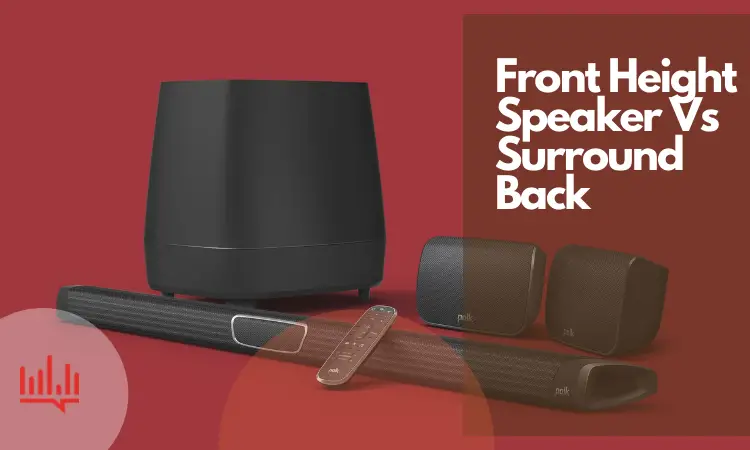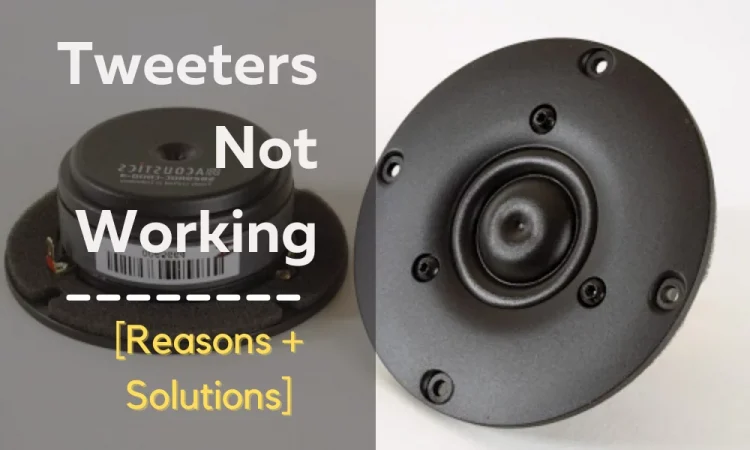Subwoofers are a nice addition to any home theater. Connecting them with speakers is pretty simple.
But the easiest way is to connect the subwoofer output with the receiver. But not all subwoofers have the speaker level output option. So, this may be a new addition to you.
So how to deal with a subwoofer with speaker outputs?
The speaker-level output on the subwoofer is designed to be connected to the receiver. You can connect it with either a dedicated speaker connector or two speaker wires. Later you’ve to adjust the subwoofer filter to get the right bass. Using the speaker level output gives a clear and subtle bass.
That’s the gist of today’s discussion. But read on to know more about how to deal with subwoofer and speaker outputs.
Let’s begin!
KEY TAKEAWAYS:
- Always use good quality cables to connect your subwoofer and speaker outputs.
- You can adjust and manage your speaker outputs with your subwoofer more flexibly.
- You don’t need speaker input to connect your subwoofer to your speaker outputs.
Why Does Subwoofer Have Speaker Outputs?
The purpose of the speaker level output on subwoofer is to attach the main speaker. It’s the easiest way to link up the subwoofer with a mixer.
But you may wonder why you even need to connect them. Because a subwoofer is intended to produce low-frequency audio. So using it to transmit the same signals through an elevated connection may seem bizarre.
The reason is to avoid lag and achieve a more natural bass. The music sounds more accurate that way. A subwoofer is already a great addition to the home theater system.
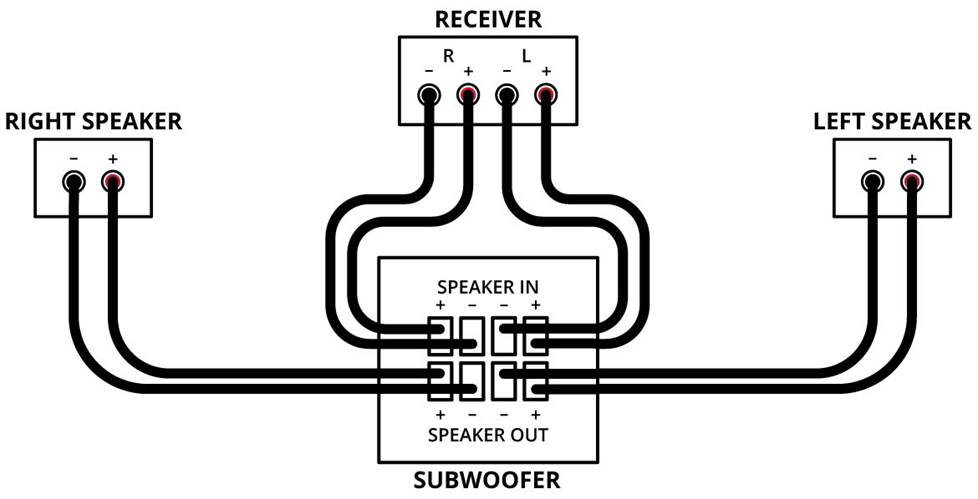
Definitely, the low tone with a mixture of the bass can make a pleasant experience. But what if there’s no output connection of the subwoofer on the receiver?
You’d have no choice but to ditch it. But there’s a way out of it. And that is to use the speaker outputs located behind the receiver. What’s more intriguing is that this connection differs from the moderate connections normally used.
In this way, the speaker and the subwoofer don’t send or receive several audio signals. Rather only one signal gets sent to all equipment and gets read by them.
So the subwoofer screens out the lower frequency signals and gives a subtle tone. They sound as good as powerbass subwoofers. You’d be able to distinguish the changes in dramatic sound expressions more clearly.
For example, sound effects of explosion, crash, or something similar. The bass would sound more natural and clear. This is why it’s preferable to connect the outputs with the receiver.
How to Connect a Subwoofer to Speaker-Level Outputs?
Now you know the purpose of connecting subwoofer to speaker output. But if you haven’t done it before you might require some guidelines. Which we will be delighted to provide.
Just follow our lead-
Step 1: Investigate the Specs of the Receiver
Start off by examining the specification of your receiver model. This will help you find the subwoofer speaker level input and output. So you can get an idea of the options you have.
In most receivers, the input and output lines are labeled. So, finding them wouldn’t be a problem. You’ll find input boxes, phase control, volume, and crossover controls in the back panel.

If the receiver is of a recent model it presumably has a dedicated output. It connects the subwoofer and optimizes the LFE sound wave designed specifically for the subwoofer.
In older models, this connection is established through the speaker level outputs. This is the place where the wires from the subwoofer will be connected.
Step 2: Investigate the Spec of the Subwoofer
Now, it’s the turn of the subwoofer to check out the specification. It’s to verify that the links you want to make are possible with the model. Examine the input and output options.

Specifically, look out for the input option. Subwoofer with speaker level inputs usually has numerous components. It can be located in the front, on both sides, or on the back panel.
It may have a linkage option between both the front and the back. But that might not be the case for all models. This step will help you figure out how the setup should be made.
Step 3: Connect the Audio Channel
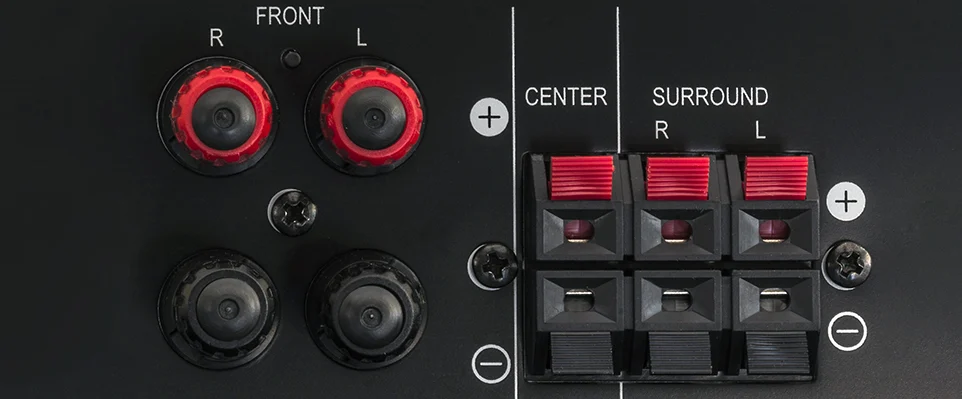
By now you must have an idea of the setup in your head. For connecting the audio channel you have two options. For both choices, you’d require either two speaker wires or a speaker connector.
Using speaker wires is the more popular option. There are plenty of affordable speaker wires available right now. For example, InstallGear 14 Gauge Speaker Wire or Bullz Audio Speaker Wire Cable are extremely popular for home audio.
Or, you can go for basic RCA speaker wire as well.
You’d have to run two speaker wires from the subwoofer’s front and back. The linkage will be established between the left and right audio channels.
- To do that, connect one wire on the left audio channel. It should be on the front side of the subwoofer. The other wire should be connected to the back.
- After setting up the wires, modify the bass emission from the subwoofer filter. If you want to use a speaker connector, collect one with the right connection type.
- It would look something like a three-end splitter. It has only one cable that connects to the three ends of the receiver. To set the connection appropriately, first link to the positive ports.
- Usually, the left audio channel is the positive one. If you’re confused about it check out the user manual. The remaining wire will be connected to the negative port.
- The cable is set now. The outcome for both options is the same. With the connector cable, there won’t be any specifically designed LFE wave signal. But the bass and the sound quality will be the same.
Step 4: Adjust the Subwoofer Filter
Now that the connection is established it’s time to adjust the sound. It’ll need a bit of adjusting which we’ll do with the subwoofer filter. This will prevent whistling from a ground loop.
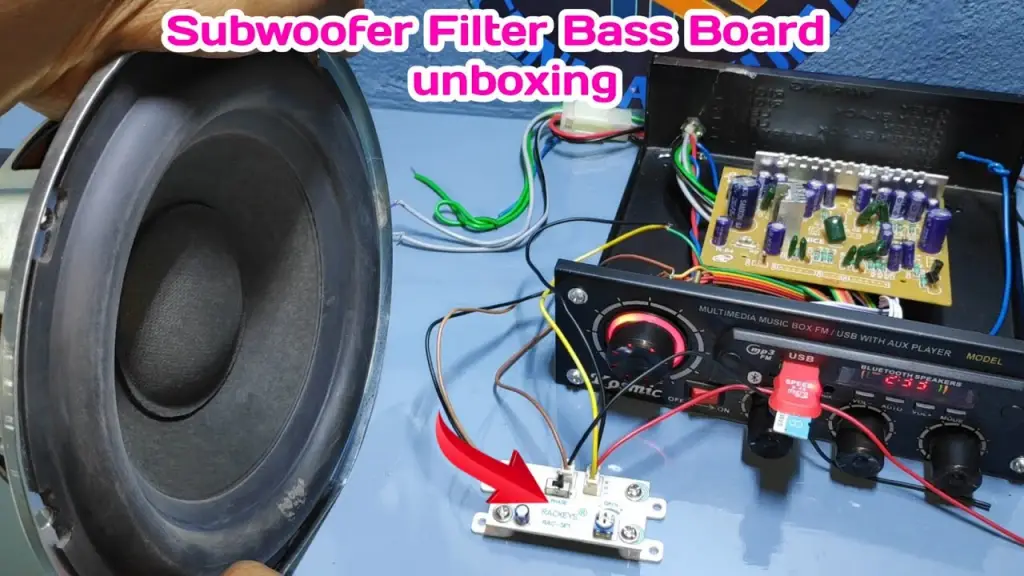
It’ll also make sure that the emissions are carried out extensively and precisely. It’s mostly about the bass sound. Check if the output sound seems clear and subtle.
Adjusting the subwoofer filter is enough for the task. But for more accuracy, you can run tests on the signals from the emissions. Special types of equipment are needed for that.
Step 5: Take Delight in the Bass
You’ve completed all the settings. Now, what’s left is to run a few tests. To be more specific check the bass sound. It should sound subtle at the same time it would be noticeable across the room.
Hopefully, the outcome was a delight in your ears. Also, if you want to know all about subwoofer connection, check out this cool video-
Just as the title says, all the processes are a lot easier than you think.
How Does Speaker Level Output Work?
Many of you wonder about the internal mechanism of speaker-level output. After all, it is fascinating that the main audio speaker signals unaffectedly pass through them.
These wavelengths don’t overlap or even distort. So how does it work? Here’s how-
Subwoofers have a high inductance electrical circuit unit inside. More specifically the powered subwoofer with speaker input line. This circuit uses a high-pass filter that helps it to pick up the audio signals.
But the signals that get passed through are off a certain frequency level. This borderline frequency is called the crossover frequency. Any frequency lower than this crossover frequency gets cut off.
So only high-end audio signals above the said frequency reach the speaker. That’s why properly setting the subwoofer crossover properly is also important.
Subwoofers also have filters that pass low-frequency signals. These filters intake the amps and then connect the subwoofer with the speaker line.
What to Do If a Subwoofer Doesn’t Have Speaker Level Input?
The intention of adding speaker-level input and output is to make the setup more convenient. But if your subwoofer is missing the speaker-level input it won’t need an output either.
So you won’t have to wire up a connection between the subwoofer and the receiver. To be frank it’s a cleaner and simplified connection system.
Because the connection is established within the existing elements. In such cases, there’s an alternative option available. Which is known as the Tape Monitor option.
All you’ve to do is connect the output from the tape monitor to the receiver. It will act as a line-level input for your subwoofer.
Therefore there’s no need to stress over the missing speaker level input. Don’t get rid of your vintage receiver. Just connect it to the main speaker or amplifier.
It’s just like connecting an old subwoofer to a new receiver. Hopefully, you won’t feel too bothered by that process!
Frequently Asked Questions (FAQs)
What’s the best setting for subwoofer and receiver crossover?
There are two options for this. The crossover on the receiver can be set to either 20 Hz or Off. Setting it to Off is the best option. That way the lower frequencies won’t be included. Now set the crossover on the subwoofer to 80 Hz. you can go for a higher frequency as well.
Where to find a subwoofer with speaker-level input and output?
Most of the high-end brands make subwoofers with speaker-level input and output. Brands like bower & Wilkins, Polk, and Klipsch are included in the top list. Some honorable mentions are Polk Audio PSW111, Klipsch C Series C-310ASWi, Bowers & Wilkins ASW610, etc.
What’s the procedure for connecting low-level input on a subwoofer?
Connecting low-level input to your subwoofer generally requires an RCA cable. It connects the subwoofer to the AV receiver. Dedicated connecting cables can also be used. But RCA cables are more convenient. But don’t use cheaper ones. It can distort the signal.
Concluding Remarks
That’s all for today on the subwoofer with speaker outputs. We hope you found the discussion helpful and interesting. You should definitely give it a try yourself.
The subtle sound of the bass won’t leave you unsatisfied hopefully. Maybe this will be a pleasant surprise even.
See you soon!

